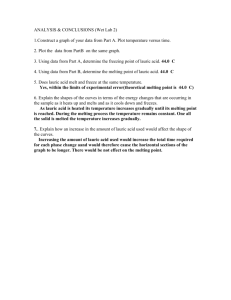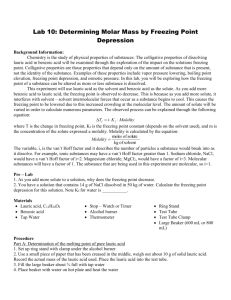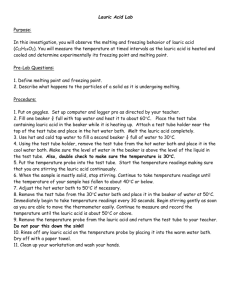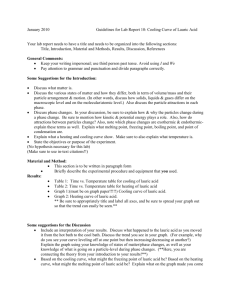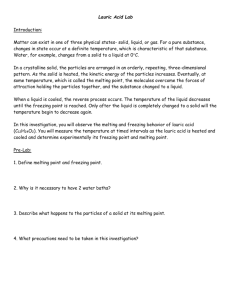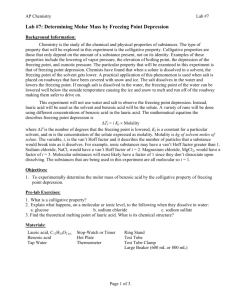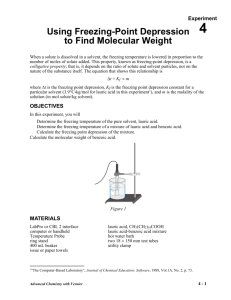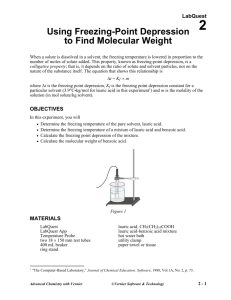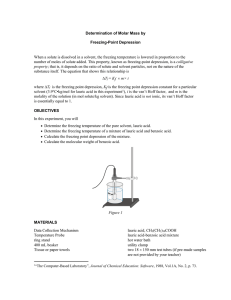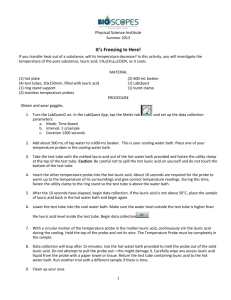Molar Mass by Freezing
advertisement
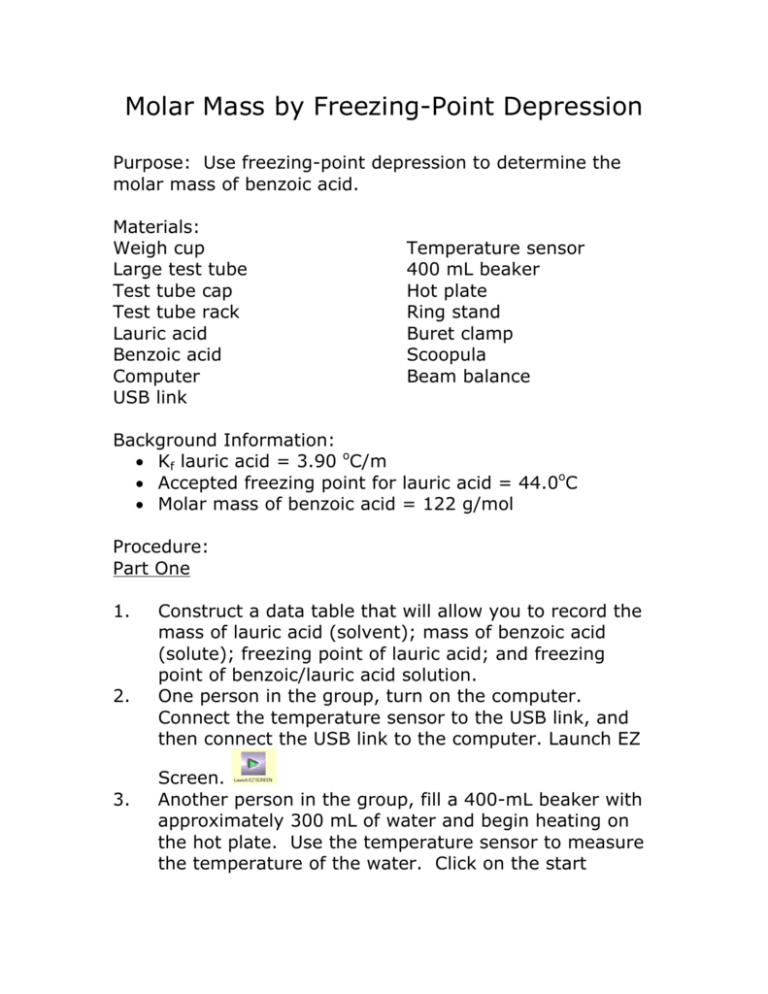
Molar Mass by Freezing-Point Depression Purpose: Use freezing-point depression to determine the molar mass of benzoic acid. Materials: Weigh cup Large test tube Test tube cap Test tube rack Lauric acid Benzoic acid Computer USB link Temperature sensor 400 mL beaker Hot plate Ring stand Buret clamp Scoopula Beam balance Background Information: • Kf lauric acid = 3.90 oC/m • Accepted freezing point for lauric acid = 44.0oC • Molar mass of benzoic acid = 122 g/mol Procedure: Part One 1. 2. 3. Construct a data table that will allow you to record the mass of lauric acid (solvent); mass of benzoic acid (solute); freezing point of lauric acid; and freezing point of benzoic/lauric acid solution. One person in the group, turn on the computer. Connect the temperature sensor to the USB link, and then connect the USB link to the computer. Launch EZ Screen. Another person in the group, fill a 400-mL beaker with approximately 300 mL of water and begin heating on the hot plate. Use the temperature sensor to measure the temperature of the water. Click on the start 4. 5. 6. 7. 8. 9. button. You want your water to reach approximately 90oC. Do not let the water boil at any time. While waiting for the water to warm, mass 8 grams of lauric acid, record the mass, and transfer the acid to the test tube. Clamp the test tube to the ring stand with a buret clamp. Lower the clamp/tube assembly until the test tube is in the water, but not touching the bottom of the beaker. Heat the lauric acid in the water bath until it melts. Move the clamp/tube assembly out of the water. Place the temperature sensor in the liquid lauric acid. Stir gently with the temperature sensor until the temperature reaches 60oC. When the temperature reaches 60oC, exit out of EZ Screen and launch Data Studio by double clicking on Then click on the icon in the bottom right tray. . 10. Click on the start button. Continue collecting data until the temperature reading remains constant for about 2 minutes. You should see crystals of lauric acid forming in the solution; you have reached the freezing point of the lauric acid. Click on the stop button. 11. Print enough copies of the graph for everyone in the group. Exit out of the program. 12. Move the buret clamp/test tube/temperature sensor back into the hot water bath and liquefy the lauric acid once again. 13. Carefully remove the temperature sensor from the liquid lauric acid. Allow any liquid drops of acid to fall back into the test tube. Remove the temperature sensor and wipe it clean with a paper towel. Part Two 1. 2. 3. 4. 5. 6. 7. Obtain 1 gram of benzoic acid. Place the benzoic acid in the test tube that contains the lauric acid from Part One. Heat the benzoic acid/lauric acid mixture until it liquefies. Launch EZ Screen again. Repeat steps 6-13 from Part One for the benzoic acid/lauric acid mixture. Pour the liquefied solution into the waste container in the back of the room. Warning: Do not pour the liquid solution down the sink! It will solidify and clog the drain. Clean up your area and wash your hands. Go back to the classroom area and fill in your data table using your graphs. Calculations: 1. Calculate the change in freezing point (ΔTf) when the benzoic acid was added to the lauric acid. 2. Calculate the molality (m) of the solution. 3. Using the formula for molality, calculate the moles of benzoic acid used. 4. Using the mass of benzoic acid used and the answer to #3, calculate the experimental molar mass of benzoic acid. 5. Using the accepted value for the molar mass of benzoic acid, calculate your percent error.
